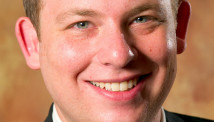For anti-doping officials, Lance Armstrong's admission of cheating was only a start. Now they want him to give details — lots of them — to clean up his sport.
Armstrong's much-awaited confession to Oprah Winfrey made for riveting television, but if the disgraced cyclist wants to take things further, it will involve several long days in meetings with anti-doping officials who have very specific questions: Who ran the doping programs, how were they run and who looked the other way.
"He didn't name names," World Anti-Doping Agency President John Fahey told The Associated Press in Australia. "He didn't say who supplied him, what officials were involved."
In the 90-minute interview Thursday night with Winfrey — the first of two parts broadcast on her OWN network — Armstrong said he started doping in the mid-1990s, using the blood booster EPO, testosterone, cortisone and human growth hormone, as well as engaging in outlawed blood doping and transfusions. The doping regimen, he said, helped him in all seven of his Tour de France wins.
His openness about his own transgressions, however, did not extend to allegations about other people. "I don't want to accuse anybody," he said.
But he might have to name names if he wants to gain anything from his confession, at least from anti-doping authorities.
Armstrong has been stripped of all his Tour de France titles and banned for life. A reduction of the ban, perhaps to eight years, could allow him to compete in triathlons in 2020, when he's 49.
Almost to a person, those in cycling and anti-doping circles believe it will take nothing short of Armstrong turning over everything he knows to stand any chance of cutting a deal to reduce his ban.
"We're left wanting more. We have to know more about the system," Tour de France race director Christian Prudhomme told the AP. "He couldn't have done it alone. We have to know who in his entourage helped him to do this."
U.S. Anti-Doping Agency chief Travis Tygart, who will have the biggest say about whether Armstrong can return to competition, also called his confession a small step in the right direction.
"But if he is sincere in his desire to correct his past mistakes, he will testify under oath about the full extent of his doping activities," he said.
Pierre Bordry, the head of the French Anti-Doping Agency from 2005-10, said there was nothing to guarantee that Armstrong isn't still lying and protecting others.
"He's going in the right direction, but with really small steps," Bordry said. "He needs to bring his testimony about the environment and the people who helped him. He should do it before an independent commission or before USADA and that would no doubt help the future of cycling."
It's doubtful Armstrong could get the same kind of leniency today as he might have had he chosen to cooperate with USADA during its investigation. But in an attempt to rid cycling of the doping taint it has carried for decades, USADA, WADA and the sport's governing body aren't satisfied with simply stopping at its biggest star. They still seek information about doctors, team managers and high-ranking executives.
Tyler Hamilton, whose testimony helped lead to Armstrong's downfall, says if Armstrong is willing to provide information to clean up the sport, a reduction in the sanctions would be appropriate, even if it might be hard to stomach after watching USADA's years of relentless pursuit of the seven-time Tour de France winner.
"The public should accept that," Hamilton said. "I'm all for getting people to come clean and tell the truth. I'm all for doctors, general managers and everyone else coming forward and telling the truth. I'm all for anyone who crossed the line coming forward and telling the truth. No. 1, they'll feel better personally. The truth will set you free."
The International Cycling Union (UCI) has been accused of protecting Armstrong and covering up positive tests, something Armstrong denied to Winfrey.
"I am pleased that after years of accusations being made against me, the conspiracy theories have been shown to be nothing more than that," said Hein Verbruggen, the president of the UCI from 1991-2005. "I have no doubt that the peddlers of such accusations and conspiracies will be disappointed by this outcome."
But Verbruggen was among the few who felt some closure after the first part of Armstrong's interview with Winfrey. The second was set for Friday night.
Most of the comments either urged him to disclose more, or felt it was too little, too late.
"There's always a portion of lies in what he says, in my opinion," retired cyclist and longtime Armstrong critic Christophe Bassons said. "He stayed the way I thought he would: cold, hard. He didn't let any sentiment show, even when he spoke of regrets. Well, that's Lance Armstrong. He's not totally honest even in his so-called confession. I think he admits some of it to avoid saying the rest."
___
AP Sports Writers Jerome Pugmire in Paris, Dennis Passa, John Pye and Neil Frankland in Melbourne; Stephen Wilson in London; Steve McMorran in Wellington, New Zealand; Nesha Starcevic in Frankfurt, Germany; and Andrew Dampf in Cortina, Italy, contributed to this report.

